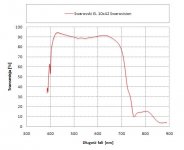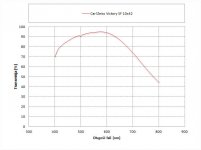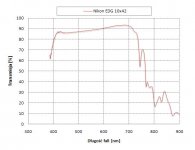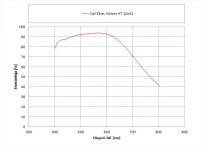Heya Wanderer, I agree with Vespo and GG, at this level of performance the bar is effectively set relatively higher as minor flaws are nit picked. So while the numbers assigned by Allbino's to various categories (eg. transmission and whiteness of image) do not greatly diminish the image seen, they do serve to distinguish the performance against the direct top competitors, ie. SV, EDG, HT, and even UVHD+ etc ...... :cat:
The SF, while posting some excellent scores in categories and overall, seems to be distinctly lacking in transmission at both ends of the visible range, especially in comparison to the 'crystalline' view of the SV. A look at the transmission curves tells the tale and shows why Allbino's scored each the way they did.
SV. Over~90% transmission from 420nm to 655nm.
SF. Over 90% transmission from only 485nm to 635nm.
http://www.allbinos.com/223-binoculars_review-Swarovski_EL_10x42_Swarovision.html
http://www.allbinos.com/304-binoculars_review-Carl_Zeiss_Victory_SF_10x42.html
The SV also has S-P prisms, so merely by the SF not using A-K prisms as in the HT, is not where the answer lies. No matter what people see with their eyes ( valid for them) the figures don't lie (caveat! well I think the Allbino's transmission figures seem rubbery sometimes, particularly when they have S-P bin transmissions so high, and the HT so low compared to what Zeiss themselves posted - but let's just deal with them at face value for their relativity among brands, though understanding that there is a margin of error in those figures that can't be ignored). Even the figures Gij's measured show a similar 'shaped' curve for the SF.
Hahahaha :-O none of this of course explains why I see a distinctly unpreferable bla, 'muddy' olive-brown view through the Swaro SLC (sorry Ed !

in comparison to the 'crystalline' SV, and the 'clarity' of the HT ....... oh well :brains: :h?: 8-P
I hope to be able to give my A/B Mark I eyeball evaluation between the top dawgs at Birdfair (Oz) .......
It looks to me like the SF needs HT type glass to boost transmission (reduce loses in the bluish part of the spectrum, and coatings re indexed to also reduce loses in the reddish part of the spectrum too) - why something that goes for $2500+ doesn't have all of the finest state of the art spec is beyond me - people are being moreorless 'ripped off' for the sake of silly marketing differentiation. For some people this will be an issue, for others not ..... No doubt some others will disagree ....... :smoke:
Chosun :gh:









